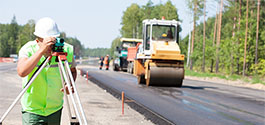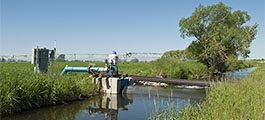Our geoscience research is incorporated into the Engineering Geosciences and Geomechanics (EGG) research group which was founded in 2005 within the Department of Civil and Environmental Engineering.
Researchers in the EGG group have expertise in a range of different disciplines including:
- geology
- experimental geomechanics
- geotechnical engineering
- geophysics
- structural geology
- hydrogeology
- constitutive and numerical modelling of geomaterials
Members of the group lead a number of national and international research consortia.
Key areas of research
Hydro-mechanical behaviour of geomaterials
The geomechanics research focus is on the hydro-mechanical behaviour of geomaterials across a wide range of scales, including:
- microscale (grain or aggregate level)
- mesoscale (‘continuum’ level)
- macroscale (geotechnical, and geological systems)
Faults & fluid flow (FAFF)
FAFF is a research collaboration led by Professor Zoe Shipton and Professor Becky Lunn in the Department of Civil Engineering. FAFF is a multidisciplinary group of researchers with expertise including:
- field characterisation of fault zone architectures
- numerical modelling of hydro-mechanical fault zone development
- the statistical characterisation of fluid flow through fault zones
Advanced materials science & applications
Materials science is broadly defined as the science and understanding of both man-made and naturally occurring materials. These can range from spiders' web silk, to printed circuit boards and from polymers to minerals formed under high pressure in oil wells.
The subject is vast and uses techniques and methods from every branch of science to understand, create and control substances and materials in our everyday lives.
Non-intrusive geophysical ground investigation
This research area focuses on the development and implementation of non-invasive monitoring methods which enable an enhanced understanding of the subsurface.
Industrial challenges
Key features of our research are knowledge exchange with industry and international collaborations. The industrial collaborations include consultants (e.g. Donaldson Associates), contractors (e.g. Keller Ground Engineering) and public bodies (e.g. Environment Agency).
Our research facilities
We have facilities for testing and monitoring geomaterials.
Microscale (grain/aggregate level)
- Scanning Electron Microscope for imaging the microstructure of geomaterials with in-situ mechanical testing
Mercury Intrusion Porosimetry to quantify the pore size distribution and evolution of geomaterials subjected to various hydro-mechanical, chemical or biological processes - X-ray diffraction to determine the mineralogy of geomaterials and potential transformation processes
- Atomic Force Microscope for atomic-scale material characterisation
- Tungsten Filament Scanning Electron Microscope
- SEM in-situ Experimental Mechanics for in-situ loadings up to 2kN, under controlled stress and strain conditions, and at up to 300,000 x magnification
- Freeze-dryer to remove liquid water while preserving the pore-structure
Mesocale (laboratory testing)
- High capacity tensiometers for direct measurement of pore-water tension (suction) up to 1.5 MPa
- Pressure plate for direct measurement of pore-water tension (suction) up to 1.5 MPaTransistor psychrometer for indirect measurement of pore-water tension (suction) in the range 1-30 MPa
- Triaxial cell for hydro-mechanical testing of unsaturated compacted geomaterials with the facility to monitor/control suction (0-30 MPa)
- Conventional front-arm loading oedometers for one-dimensional compression of geomaterials
- Suction-monitored/suction-controlled oedometer for compaction (constant water content) and compression(constant suction) under unsaturated conditions
- Large shear box for testing the shear strength of compacted ornatural soils and rock joints under partial saturated conditions (max. normal force 100kN)
- Bespoke devices to investigate the hydro-mechanical response of the rock—buffer interface and block-block interface including chemo-mchanical erosion
Macroscale (field monitoring)
- Nanoseismics (NS), short period seismic array consisting of three 1-D seismometers and one 3-D seismometer to detect signals produced by brittle material failure at distances (source to receiver) of up to 10km and magnitudes down to ML = -3 and accompanying software that allows for the discrimination of weak signals from noise for signal-to-noise ratios up to 1:1
- Electrical Resistivity Tomography (ERT) system coupled with miniature geo-electrical resistivity arrays
- Time Domain Reflectometry (TDR) system for local measurement of water content and electrical conductivity
- Profile probe for measurement of water content profile up to 1.5 m depth
- Geological field mapping & field data collection





